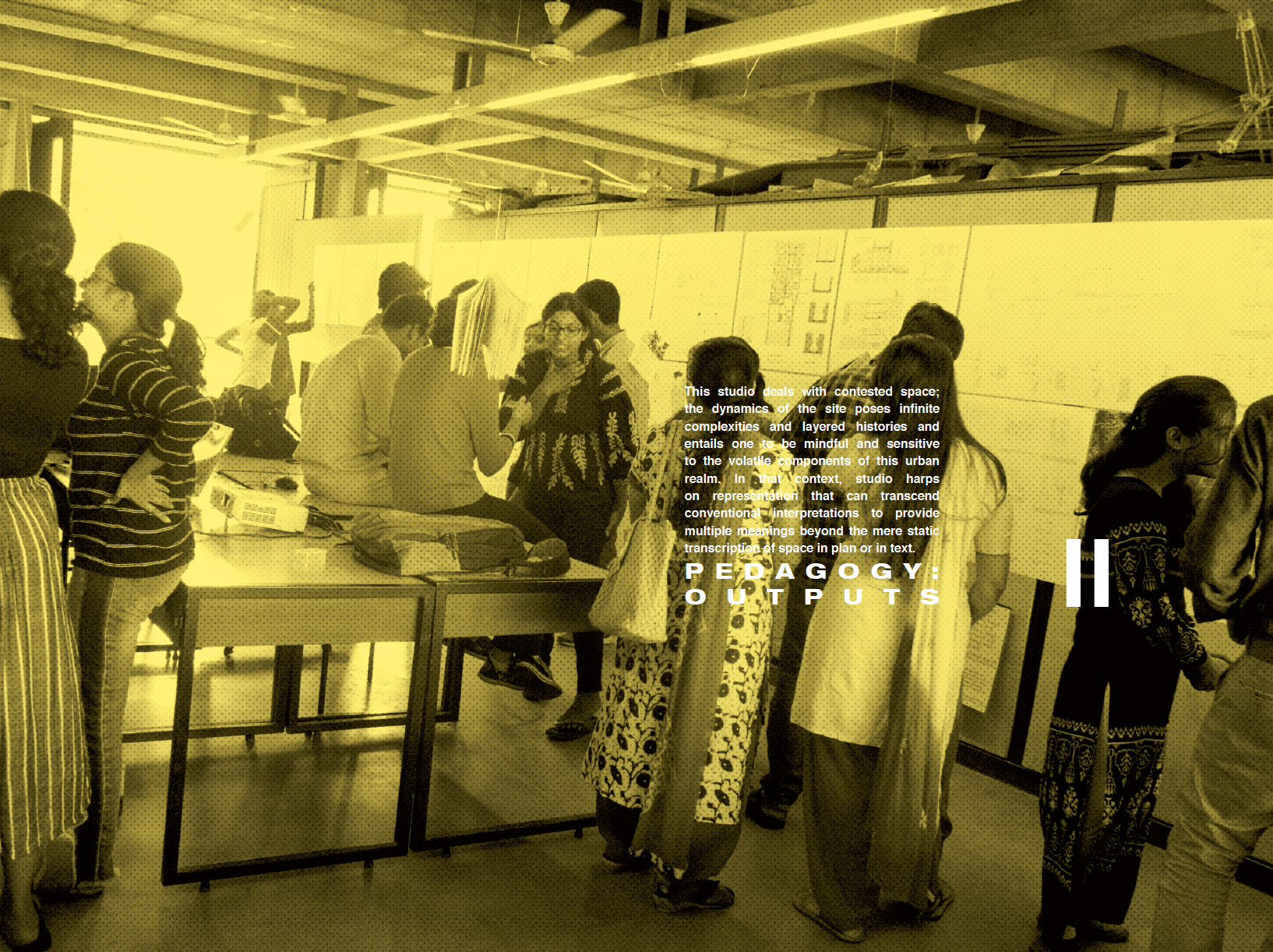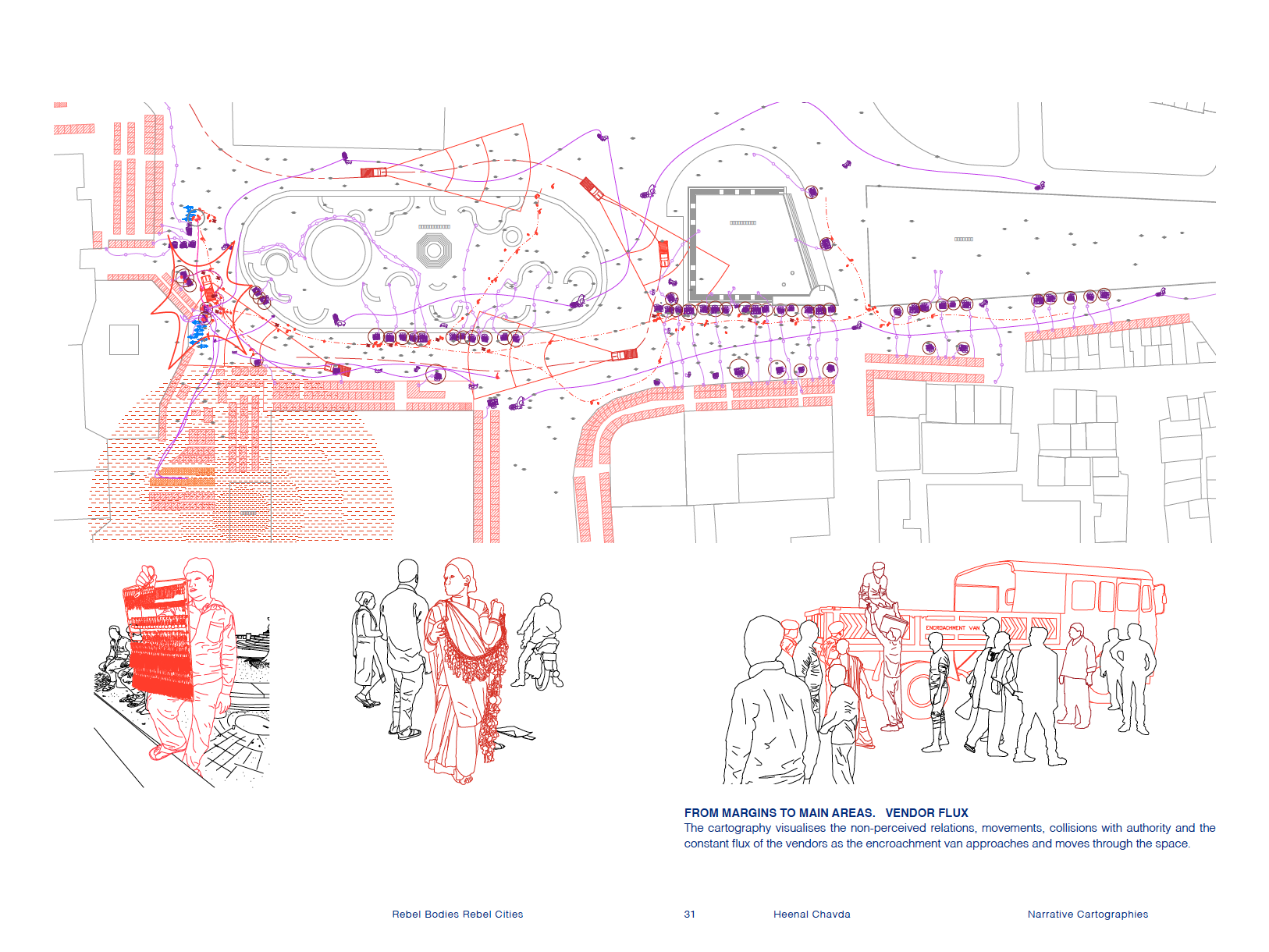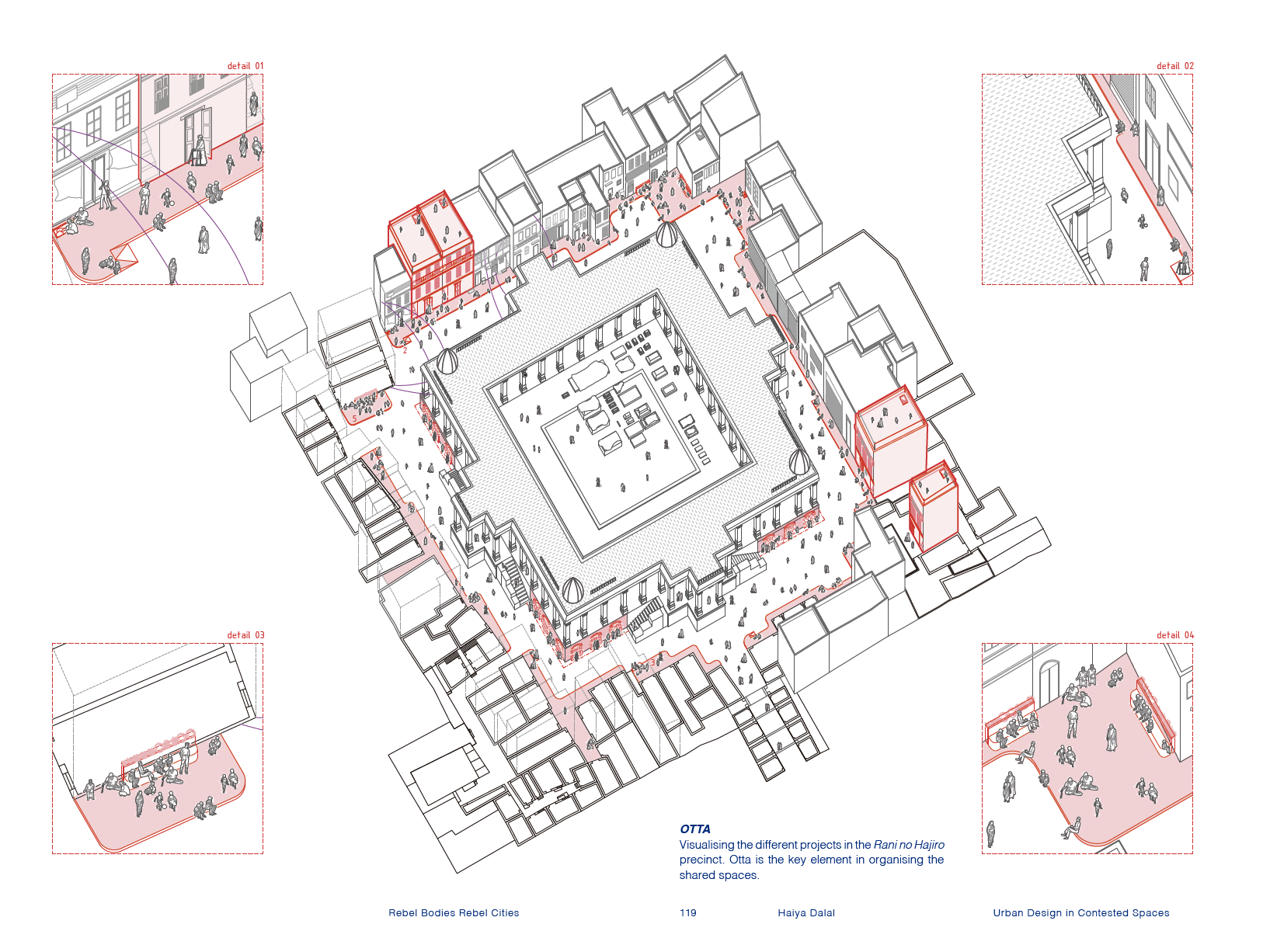
Authors: Víctor Cano Ciborro + Mansi Shah
Contributions of: Purvi Tank, Aditi Mishra, Atal Chadha, Bhumika Sachdev, Heenal Chavda, Dhwani Doshi, Dibyashekhar Bhattamishra, Divya Rampal, George Verghese, Haiya Dalal, Jaimin Bali, Khevana Makhanwala, Khushali Haji, Raghav Kohli, Sakshi Sharma and Sparsh Patlan
CEPT University
Rebel Bodies Rebel Cities on Amazon
2022, Soft cover, 230x144 mm, 156 pages
Public spaces in Indian cities are not just an agglomeration of buildings but are entwined with complex social processes. The spatial compositions embody different aspirations, needs of people and actions that override what might be the permissible use of space to a more everyday or desired use of space. This ensemble of needs and collectively shaped areas is often read as civic disobedience, violation, and informality and it is opposed even if it contributes to vitality, activation, active frontages or safety.
The book Rebel Bodies Rebel Cities continues this theme and puts forth pedagogy and design projects by students that draw upon complexities of an extremely contested urban area in Ahmedabad: Bhadra Fort Precincts. It is a place where several local forces and top-down control together manifest in a myriad of unplanned actions and differing interests on the ground making it one of the most volatile public spaces.
Contributions of: Purvi Tank, Aditi Mishra, Atal Chadha, Bhumika Sachdev, Heenal Chavda, Dhwani Doshi, Dibyashekhar Bhattamishra, Divya Rampal, George Verghese, Haiya Dalal, Jaimin Bali, Khevana Makhanwala, Khushali Haji, Raghav Kohli, Sakshi Sharma and Sparsh Patlan
CEPT University
Rebel Bodies Rebel Cities on Amazon
2022, Soft cover, 230x144 mm, 156 pages
Public spaces in Indian cities are not just an agglomeration of buildings but are entwined with complex social processes. The spatial compositions embody different aspirations, needs of people and actions that override what might be the permissible use of space to a more everyday or desired use of space. This ensemble of needs and collectively shaped areas is often read as civic disobedience, violation, and informality and it is opposed even if it contributes to vitality, activation, active frontages or safety.
The book Rebel Bodies Rebel Cities continues this theme and puts forth pedagogy and design projects by students that draw upon complexities of an extremely contested urban area in Ahmedabad: Bhadra Fort Precincts. It is a place where several local forces and top-down control together manifest in a myriad of unplanned actions and differing interests on the ground making it one of the most volatile public spaces.




To comprehend this extremely heterogeneous and contested territory the methodology employs observing, listening and cartographying the space and its historic layers from an ethnographic viewpoint. It develops a particular language of visualisation that builds sensitivity while recording the unseen processes. The design deliberations react to the context and values instead of being resistant to it and begins to represent processes; relations’ people hold to the site as fundamental organising principles.
This book aims to create contemporary and practical propositions to offer alternatives to contentious heritage sites, manage marginal productivities or ways to reuse neglected buildings through an emancipatory and pertinent design approach.
This book aims to create contemporary and practical propositions to offer alternatives to contentious heritage sites, manage marginal productivities or ways to reuse neglected buildings through an emancipatory and pertinent design approach.










